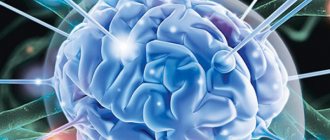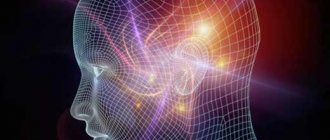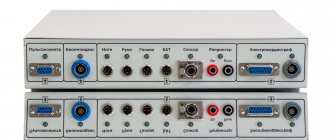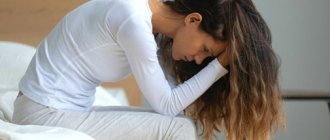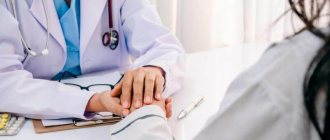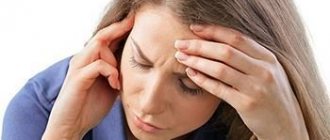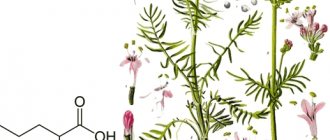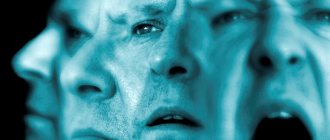Causes of pathology
Migraine is not associated with other diseases and often occurs suddenly.
Factors that can provoke an acute attack:
• Emotional fatigue, heavy physical exertion. • Monotonous work. • Constant lack of sleep. • Drinking alcoholic beverages. • Irregular meals, unbalanced diet. • Frequent consumption of foods containing tyramine (a large percentage of this substance includes nuts, chocolate, processed meats - sausages and smoked meats). • Spending a long time in the open sun. • Harsh light, loud sounds.
Hormonal changes during pregnancy or menstruation can also cause a prolonged migraine attack in women.
Home treatment consists of managing pain flare-ups and taking preventative measures to reduce their frequency.
Migraine can cause facial paralysis, so if symptoms occur, you need to act immediately to eliminate them as quickly as possible.
What it is?
This is a kind of neurological disease that affects almost 15% of people of different ages. Much more often this disease affects women who are of working age .
Men, in turn, suffer from this disease less often due to their hormonal mood in the body (more details about migraine in men and methods of its treatment can be found here). In most cases, people suffering from migraines do not come to the hospital with their problem, but try to get rid of it on their own.
IMPORTANT! Migraines can occur at any age. This is not an age-related disease, so all groups of people fall into the category.
Factors provoking the disease
This disease can be caused by a number of factors.:
Constant stress.- Hormonal imbalances in the body.
- Severe fatigue.
- Circulatory disorders in the brain.
- Premenstrual syndrome can also cause migraine attacks.
- Excessive alcohol consumption.
- Abuse of smoked meats and chocolate due to the excess they contain tyramine.
All these factors can provoke an exacerbation of the disease.
Signs in adults
Increased headache may be only one of the signs of this disease, but depending on the degree of development of the disease, the disease may be accompanied by a number of other distinctive signs.
REFERENCE! In the vast majority of cases, people experience migraine without aura.
Aura is a whole complex of neurological disorders. It often appears before the onset of an acute attack or may be accompanied by a headache.
Often the aura lasts from five minutes to one hour, but in some exceptions such a symptom can persist for several days, which, of course, has a detrimental effect on the emotional state of any person.
The main signs of migraine are the following::
- Initially, the disease is accompanied by fluctuations in appetite and increased thirst.
- The person then becomes irritable and restless, and in some cases begins to experience severe drowsiness and fatigue.
- After the first signs comes the aura. It may be accompanied by pain or only cause it.
- The migraine itself can last from several hours to several days. In this case, pain gradually arises in the temporal, frontal and occipital parts. There are cases where the pain alternates with a gradual increase in one part of the head.
- The resolution phase occurs when the attack resolves with the help of medication or disappears on its own.
- During the final phase of recovery, the patient experiences increased appetite and excessive urination.
ADVICE! At the first symptoms of this disease, you should definitely seek help from a doctor. He will conduct an examination and prescribe a course of treatment (you can find out more about which doctor treats migraines here).
You can find out whether the feeling of scalp pain when touched is another sign of migraine or not by clicking here.
Emergency measures
To quickly relieve pain, you need to know what to do for migraines at home. Therefore, among the many folk remedies, it is important to choose the one that suits a particular person.
During an attack, the patient needs a quiet, darkened, ventilated room, a horizontal position, an analgesic and a cold bandage on the head.
Traditional medicine knows a lot of methods and home recipes for quickly getting rid of migraines.
• First aid: stand in a hot shower, direct the stream to the back of your head, or hold your hands and feet in hot water.
• Apply onion halves or onion pulp to your temples and secure with a tight bandage. An alternative to onions is cabbage or lilac leaves.
• At the initial stage of an acute attack, drink a quarter glass of freshly squeezed potato juice;
• Inhale the vapors of a mixture of ammonia and camphor alcohol (take in a 1:1 ratio).
Children can also be treated for migraines at home. The child should be placed in a quiet, darkened room, a cold bandage should be applied to the forehead, and a sweet drink should be offered. Milk with a spoon of honey, berry juice or sweet lemon tea will do. If there is no improvement, use drug treatment.
Pregnant women should be careful when choosing folk remedies to combat migraines, since many herbs help increase the tone of the uterus, causing miscarriage. Mistletoe and horsetail have these properties.
To relieve migraine attacks in pregnant women, the following remedies are used:
• Contrast warm shower. • Cold compresses. • Light exercise, swimming. • Head massage. • Regular walks. • Herbal tea based on lemon balm, rose hips or chamomile, if there is no individual intolerance.
herbal tea helps fight migraines
Disease prevention
For prevention purposes, it is necessary to make adjustments to the patient’s lifestyle. It is necessary to give up alcohol (especially drinking red wine, beer and champagne) and smoking, play sports, adjust your diet, protect yourself from stress and overwork, and take a walk every day.
Along with measures to relieve acute attacks, there are a number of actions to prevent their occurrence. These include the use of herbal infusions; applying cooling and warming compresses, using essential oils; massage; medicinal baths.
Oral preparations
Traditional medicine has collected many recipes for healing herbal decoctions, teas and tinctures that can prevent or cure headaches at home. This medicine should be taken with caution, starting with a small dose, to ensure that an allergy to its components does not result.
Herbal teas and infusions
Cooking recipes:
• Tea with clover.
Take a glass of clover decoction daily. It is prepared by pouring boiling water over dried flowers and leaving for 1 hour.
• Decoction with lemon balm.
Pour fresh or dry herbs into boiling water, let it brew, and drink a sip at the initial stage of an attack.
• Linden tea quickly relieves pain. Drink up to 5 glasses a day.
• Infusion of dill seeds.
Pour a glass of boiling water and 1 teaspoon of seeds, leave for 2-3 hours, drink several times a day in small portions.
• Collection of mint, oregano and fireweed tea
Mix equal parts of oregano, mint and fireweed, and brew in boiling water. Take 2-3 tablespoons morning and evening.
• A decoction of viburnum bark helps normalize high blood pressure.
Add 2 tablespoons of crushed dried bark to boiling water, keep in a water bath for half an hour, cool, pass through cheesecloth or a sieve. Drink a tablespoon daily in several doses.
Herbal decoctions are included in the daily menu and consumed instead of regular tea. The result of this treatment will become noticeable after 2-3 months of constant use of decoctions. The herbs in the mixture enhance each other's actions.
Bee products
Consuming honey can prevent an attack or relieve one that has already begun; it has a calming and relaxing effect. Honey enhances the effect of herbal preparations, making their intake more pleasant.
It is recommended to drink half a glass of water during meals, adding a teaspoon of apple cider vinegar and honey.
Royal jelly relieves migraine symptoms and is available in pharmaceutical preparations in the form of tablets and suppositories.
The drug "Apilak" is taken both to relieve an acute attack and to prevent it.
Pollen is infused in boiled water and taken several times a day. Used in complex therapy with herbal decoctions.
Wine infusions
The saturation of biologically active substances makes natural wine a good assistant in the fight against migraines.
Wine decoctions are contraindicated for pregnant women, patients predisposed to alcoholism or peptic ulcers.
To prepare the decoction, make a mixture of fragrant woodruff (20 g), motherwort (20 g), blackberry leaves (30 g), dried cucumber (20 g), thyme (10 g).
Heat 500 ml of white semi-sweet wine to high temperature, add herbs. Let it brew for 4 hours. Take the strained decoction 1 teaspoon 4 times a day. The course lasts 3 weeks.
To prepare a red wine tincture, add 100 g of motherwort to 500 ml of wine. Take in small doses.
Berries
To prevent migraine symptoms, you need to drink juices and teas from viburnum, strawberries and black currants daily. Eating berries during an attack helps stop it.
Black currant is a good antioxidant and helps with oxygen starvation of the brain. As preparations, currants are dried, frozen, and ground with sugar or honey. Tea with currant leaves has beneficial qualities.
Viburnum is a natural source of magnesium and potassium, regulates the condition of blood vessels, and is an antioxidant.
Strawberries contain ascorbic acid and P-active compounds, strengthen blood vessels in the brain. Both the berries themselves, fresh frozen and dried, and the leaves are suitable for consumption.
Contraindications to berry treatment are gastritis and peptic ulcers.
External remedies in the fight against migraine
The presence of contraindications to the use of medications and folk remedies due to pregnancy or allergic reactions is compensated by external methods.
Water treatments
To combat the manifestations of migraines, contrast showers, compresses and medicinal baths are used.
• A hot or contrast shower is the fastest and most affordable remedy at home; it has a beneficial effect on the condition of blood vessels.
• Cold compress on the head and a hot bath on the feet if the face becomes red during an attack. If the face has turned pale, then do the opposite.
• Pour a glass of apple cider vinegar into a bathtub with warm water, take a bath for 15 minutes, and rinse in the shower. A head compress made from an apple bite and cold water is also useful (take in a ratio of 1:4).
• Pour a handful of powder into warm water and stir. Keep your hands and feet in water until the skin turns red.
• To take a honey bath, you need to mix a little honey and liquid soap and pour it into water. Procedure time – 30 minutes.
• A salt or vinegar mixture is effective in treating migraines. In 1 liter of water, dilute 1 tablespoon of salt or vinegar. Moisten the stomach with the resulting solution and allow it to dry without wiping it. After several steps of this procedure, the frequency of headaches will noticeably decrease.
Massage
Daily acupressure is an effective way to prevent the disease. The points are massaged with your fingertips for several minutes.
Active points:
• Tai Yang: in the depression near the temple.
• Pian TouDian: on the middle joint of the ring finger
• Shoi chi: if you bend your arm at the elbow, then the point is on the outer edge of the fold.
When an attack approaches, you need to start doing a head massage.
Using circular movements with your fingertips, knead the scalp, first clockwise, then counterclockwise. Massage your head from the forehead to the back of the head, dividing the hair into several partings and smoothing each part separately. Rub your head in a circular motion along the hairline.
Place the palm of one hand on your forehead and massage the back of your head with the fingers of the other.
Head massage is carried out using pressing, stroking, tapping movements.
Massage is the most acceptable method of getting rid of migraines for pregnant women, since they are limited in taking analgesics and traditional medicine.
An effective remedy for migraines is head massage.
Aromatherapy
Aromatic oils are used by patients of any age, pregnant and nursing mothers in the absence of individual intolerance to the product.
Essential oils of lemon balm, lavender, peppermint, and eucalyptus are used in therapy.
Citrus aromas will save you from nausea.
Juniper, sandalwood, and chamomile oils have a calming effect.
A couple of drops of menthol oil mixed in a glass of water relieves pain.
Nutrition for migraine proneness
The table below will help you create a suitable menu for every day, which indicates products that relieve migraine attacks and reduce their frequency, and vice versa, those that should be avoided if you suffer from this disease.
| Food products | Allowed | Limited (cautious) use | Strictly prohibited |
| BEVERAGES | Decaffeinated coffee, fruit juices, soda, decaffeinated sodas | Coffee and tea no more than 2 times a day; Caffeine-containing carbonated drinks and hot chocolate 1 glass once a day | Alcoholic drinks: sherry, vermouth, beer, ale. Canned soft drinks |
| Meat, fish, poultry, eggs | Freshly prepared fresh meat, poultry, live fish, fresh eggs | Bacon, sausage, sausages, smoked beef, ham, caviar | Stale, canned, salted, pickled, smoked, spicy foods. Salami, liver sausage. Stale meat, liver |
| DAIRY | Whole milk 2% fat or skim. Low fat processed cheese | Parmesan, yogurt, yogurt, sour cream 1⁄2 cup per day | Long-aging cheeses: Swiss, Roquefort, cheddar, Emmental |
| FLOUR PRODUCTS, GREATS, PASTES | Factory-produced yeast dough products; products prepared with the use of raising agents (biscuits); any porridge; any pastes (for example, tomato) | Homemade yeast dough, sour dough bread | Products with additives such as E-102, E-122, chocolate, walnuts, citrus zest |
| VEGETABLES | Asparagus, carrots, spinach, tomatoes, boiled or fried onions, potatoes, zucchini, legumes, pumpkin, beets | Fresh onion | Canned and pickled soy and bean products. Soy sauce |
| FRUITS | Apples, pears, cherries, peaches, apricots | No more than 1⁄2 cup per day: citrus fruits (oranges, tangerines, grapefruits, pineapples, lemons), avocados, bananas, dates, red plums, raisins | — |
| NUTS and CEREALS | — | — | Any nuts and grains |
| SOUPS | Homemade soups | Soups containing yeast, MSG (Chinese cuisine), meat broth | — |
| DESSERTS and sweets | Sugar, honey, muffins, cookies, jam, jelly, lollipops | Products containing chocolate: ice cream (1 cup), chocolate candies (15 g) | Meat pies |
| SPICES | Any | — | — |


